Replacing or repairing synthetic lifting slings can be a time-consuming and costly process for anyone in the lifting and rigging industry.
Sometimes, the most frustrating part can be that the sling itself is fine, but the hook needs to be replaced or causes the entire unit to be removed from service in line with the American Society of Mechanical Engineers (ASME) B30.10 Hooks and/or B30.9 Slings standards.
To relieve your frustrations as an end-user, Columbus McKinnon (CM) has created the Quick Connect Hook, designed to be used with synthetic roundslings and web roundslings.
In this article, you will learn:
- What a Quick Connect Hook is
- What makes Quick Connect Hooks unique
- What problems Quick Connect Hooks solve
- How Quick Connect Hooks can be used worldwide
- What is the best use for Quick Connect Hooks
- Cost comparison
- Inspection criteria
What Is a Quick Connect Hook?
CM’s Quick Connect Hook is designed specifically to integrate into synthetic slings, whether it is flat web nylon slings, polyester slings, polyester roundslings, high-performance roundslings or even some of your Ultra High Molecular Weight Polyethylene (UHMPE) high-performance rope slings.
The quick hook is designed to incorporate into those slings with reduced bearing stress.
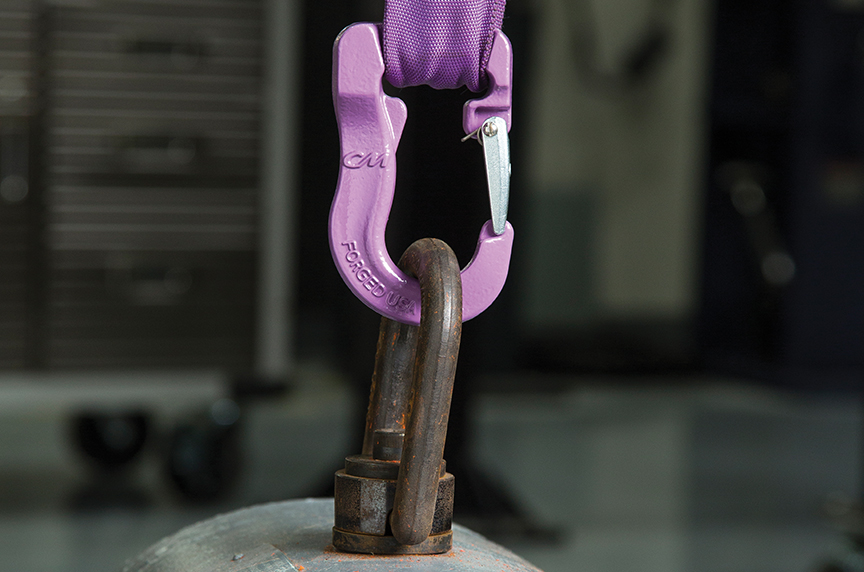
What Makes a Quick Connect Hook Unique?
On a standard sling hook, there’s an eye-shaped opening. In that circular area, you have to run some calculations to find the “bearing stress” depending on the size of the sling you’re using. The Web Sling and Tie Down Association (WSTDA) recommends 7,000psi or less on your bearing stress of that sling.
When using a synthetic sling, you often have to use additional hardware, such as a shackle to connect the sling to the hook, which adds weight, cost, and inspection time to the sling.
With the flat bearing surface, you have full contact with the sling. You don’t have to take any reduction to the working load limit (WLL). You don’t have to oversize your hook, and there’s no need for additional hardware.
What this allows you to do is to remove this hook if the sling becomes damaged. It allows you to remove the sling if the hook becomes damaged. You’re not throwing away the entire unit or spending time going through a costly repair process and potential downtime. You can simply discard and replace one or the other.
Other Benefits of Using Quick Connect Hooks
Color Coded for Easy Pairing with Slings
For easy selection, Quick Connect Hooks are color coded to match common industry synthetic sling capacities.
Color coding is not standard in the US, so always refer to the working load limit stamped on the hook and the working load limit on your sling tag before executing a lift to make sure you’re using the correct hook with the correct sling.
- Purple-Working Load Limit of 2,600 pounds
- Green-Working Load Limit of 5,300 pounds
- Yellow-Working Load Limit of 8,400 pounds
- Red-Working Load Limit of 13,200 pounds
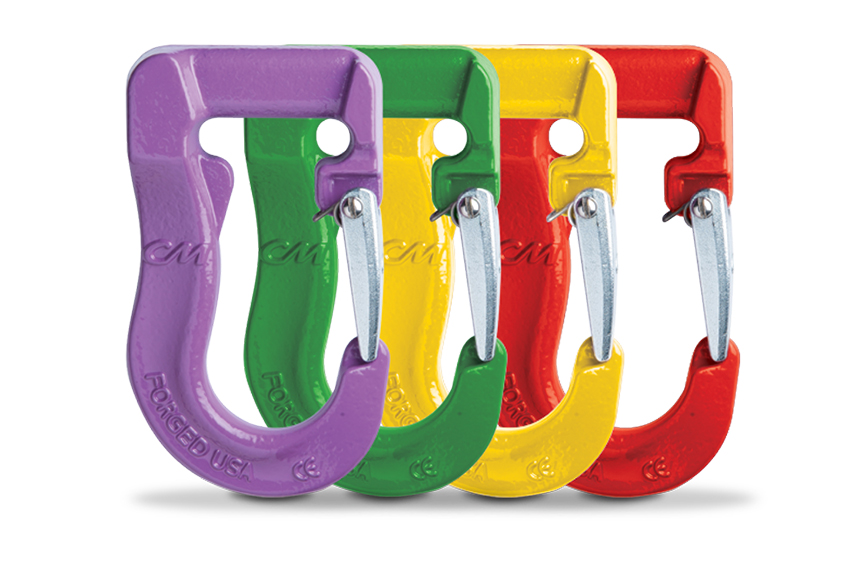
Built to Meet All Standards for Worldwide Use
The CM Quick Connect Hooks are built to meet or exceed ASME B30.10 standards, and is CE embossed for worldwide use.
All Quick Connect Hooks are stamped with the:
- Name or Trademark of Manufacturer
- Working Load Limit or Size
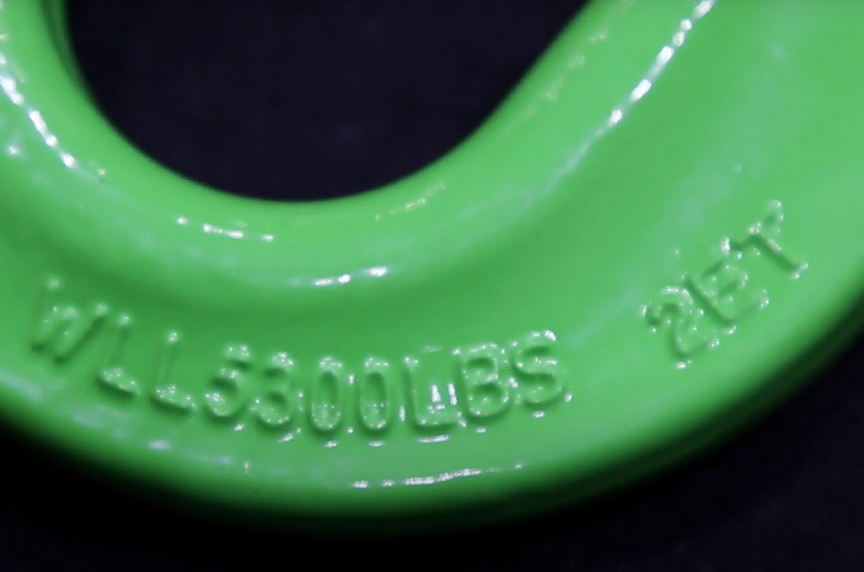
Made in the USA
Like all CM rigging products, the Quick Connect Hooks are forged and manufactured in the United States.
Many synthetic sling hooks on the market are imported from international companies, so CM’s big advantage is they’re making these in the United States in its forging plant. It’s with American steel, and they’re able to control the manufacturing process.
On top of that, CM has distributors like Mazzella in the United States that stock these hooks, so they’re readily available, and quickly could go from warehouse to end-users at the jobsite.
The problem we see with a lot of imported products is they’re not properly marked, if they’re marked at all. With imported products, they often fail out on inspection because they don’t have the markings required by the ASME B30.10 Hooks standard.
Conveniently Replaced
CM added the Quick Connect Hook to their product line because synthetic slings are really becoming the norm in the lifting and rigging industry because they’re:
- Lightweight
- Less expensive
- Easier to use
Riggers appreciate the CM Quick Connect Hooks because of their weight. The traditional method of attaching hooks always was to have the sling fabricated with the hooks on it.
This is a way to add hooks to existing slings. If a company has stock slings and somebody needs a hook on it, they can just pull one out of stock, put the hook on and send it out to the customer in a very timely and efficient manner.
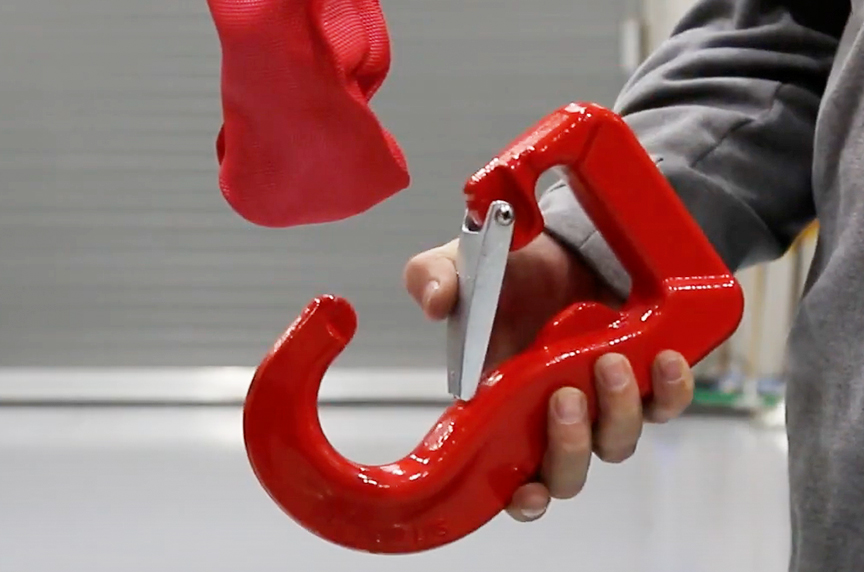
Prevents Bunching
A lot of times, when you have a synthetic or a flat web sling with the eye hook attached to it, the eye is small where the sling goes through. To fix that problem, sling manufacturers will oversize the hook and give you a bigger opening to put through the synthetic sling because of bearing stress.
The CM Quick Connect Hook has that flat bearing surface, so when the sling sits in the hook, there’s no way it can bunch up. The weight of the lift is distributing evenly across that flat bearing surface.
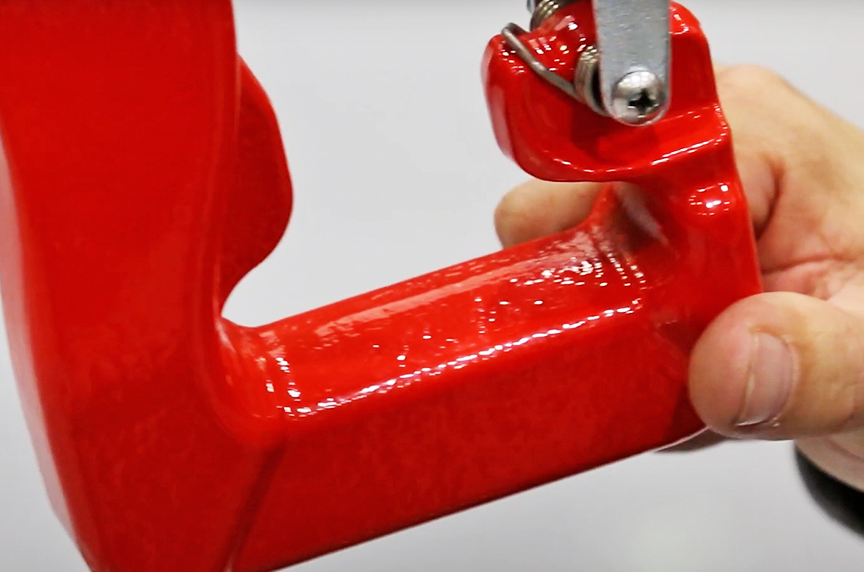
Ease of Use
It’s ease of use is off the charts compared to having to find the right size shackle to use for a standard hook.
Also, you eliminate the confusion on the worksite of, ‘Well, we don’t have a shackle quite big enough, but it’s going to work, so let’s just use it. We’ll make this lift.’ That’s usually how accidents happen, and is a recipe for disaster.
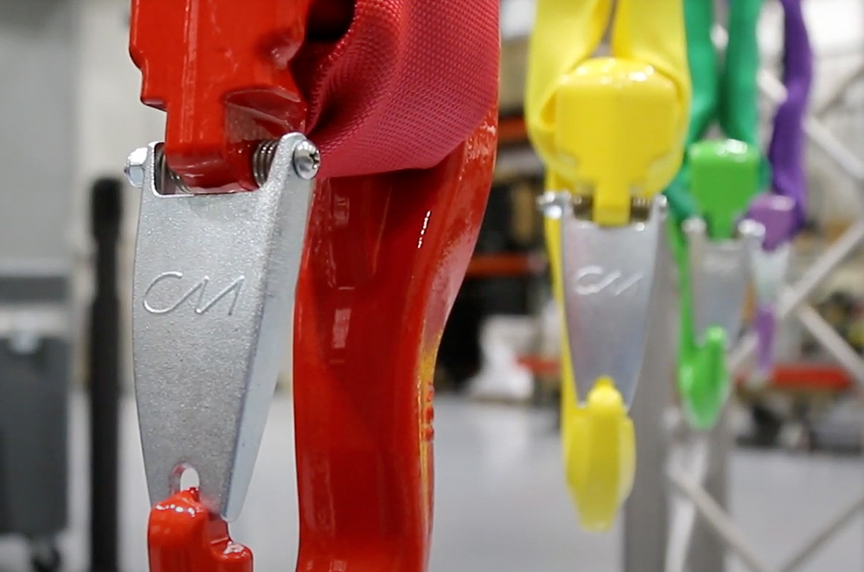
Ease of Replacement
If you commonly use yellow and green roundslings and have yellow and green CM Quick Connect Hooks on-site that match your lifting capacities, you will be minimizing your downtime. When you need a hook, you simply attach it to the sling and use it. When you don’t need the hook, take it off.
The Quick Connect Hook comes with CM’s standard latch used on other hooks, so you don’t need to get a special latch for repairs. The standard latches are in stock, and ready to be shipped out at any time.
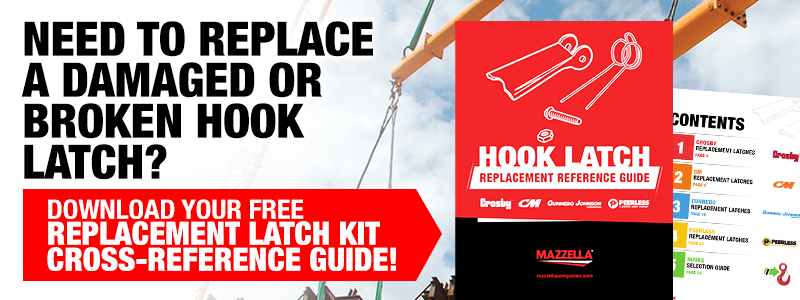
Existing Problems Quick Connect Hooks Solve
One of the issues with using a regular sling hook on a synthetic sling is the ease of wrap. If you’re out in the field getting ready to do a lift and you realize, “Oh, I need a sling with a hook on it,” if you don’t have that, you have a couple different options.
You’ve got to go to your toolbox, tool crib, or truck and search to find a shackle to fit over your sling, and then, fit the eye of a hook you already have on hand. By putting more components on the sling, it adds:
- Weight
- Inspection Time
- Cost
Also, if you didn’t have a spare hook or shackle available on site, you have to contact your sling manufacturer and order a new sling with a hook on it. Chances are, they don’t already have a sling in stock to meet your needs. Then, you have to get a new sling fabricated to the hook.
With CM’s Quick Connect Hook, if you buy a couple of these in the common sling sizes that you use regularly, you can have them in your tool crib, toolbox, or truck. If you get into a situation where you need a hook on a sling, you can quickly:
- Attach it to the sling
- Make your lift
- Take it off the sling when you’re done
- Put it back in your toolbox
- Leave it on the sling for future use
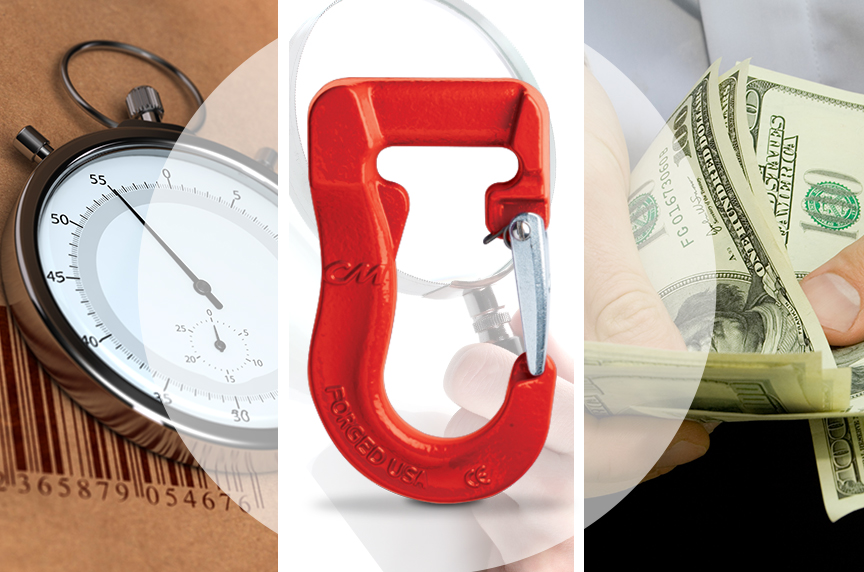
Eliminates Need for Additional Inspection
When there are elaborate assemblies with shackles or connecting links fabricated on the slings, you have to do an inspection of the whole unit. If there’s damage, chances are you have to send it back to the sling manufacturer for repairs, or order a replacement of the entire unit.
With this type of application, you can simply take off the hook, inspect the hook and put it aside. If the sling’s damaged, but the hook remains within ASME B30.10 Hooks standard requirements, you can go right to your tool crib, grab a new sling and get back to work in short order. You’re really reducing your:
- Downtime
- Inspection Time
- Overall Cost of Operation
It’s solving the pain point of ease of accessibility of attaching a hook to a synthetic sling in a timely and cost-effective manner.
Best Fit Applications
Where CM has had a lot of success with these Quick Connect Hooks is in light construction, which includes end-users utilizing mobile cranes to make quick moves and quick lifts. CM has seen a lot of success in the HVAC market when contractors with mobile cranes are lifting the HVAC units up and setting them on top of buildings.
Anyone currently using roundslings at or below 13,200 pounds capacity may benefit from incorporating CM Quick Connect Hooks into your rigging equipment.
If you start getting into high heat applications or have environments with sharp edges, obviously you’re going to stay away from synthetic slings and use wire rope or chain slings for those lifts.
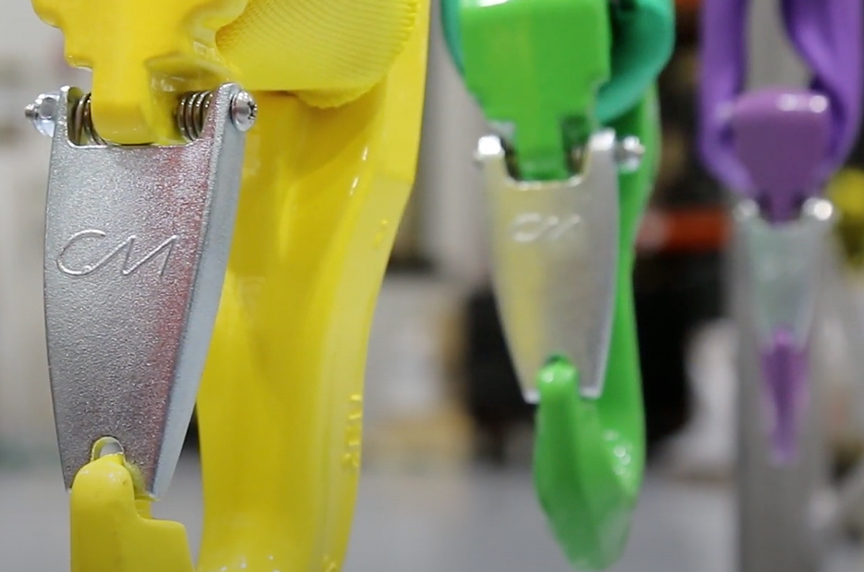
Cost Savings
What’s unique about the CM Quick Connect Hook is cost-wise, what you have to look at is take a yellow roundsling at 8,400 pounds of working load limit.
With some other products, you may have to do some calculations, or oversize your hook, to account for bearing stresses and reduction in working load limit.
With CM’s Quick Connect Hook, it’s rated at exactly 8,400 pounds, so the hook-to-sling ratio is a lot better. You’re not giving too much hook or not enough hook.
The other cost saving aspect is in the field.
Along with eliminating the need for increased inspection time, you take away the need for additional connection hardware, such as shackles. You don’t have to worry about the additional cost of the sling manufacturer maybe fabricating that sling into the hook. You can start to reduce cost in other areas that balance out and put this product ahead of others.
Inspection Criteria
These Quick Connect Hooks fall under the inspection and removal from service criteria of ASME B30.10 Hooks.
The goal of a rigging inspection is to thoroughly evaluate the condition and remaining strength of all equipment used to perform overhead lifts or used for load-handling activities.
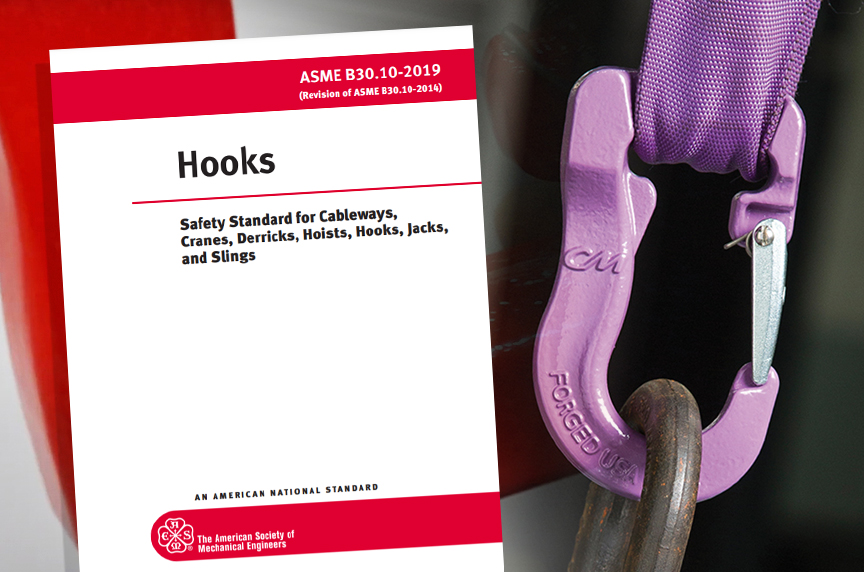
ASME B30.10 requires initial, frequent, and periodic inspections for lifting and rigging gear, and that hooks shall be removed from service if damage or evidence of any of the following is present:
- Missing or illegible hook manufacturer’s identification or secondary manufacturer’s identification
- Missing or illegible rated load identification
- Excessive pitting or corrosion
- Cracks, nicks, or gouges
- Wear – any wear exceeding 10% (or as recommended by the manufacturer) of the original section dimension of the hook or its load pin
- Deformation – any visible apparent bend or twist from the plane of the unbent hook
- Throat opening – any distortion causing an increase in throat opening of 5% not to exceed 1/4” (6mm), or as recommended by the manufacturer
- Inability to lock – any self-locking hook that does not lock
- Inoperative latch (if provided) – any damaged latch or malfunctioning latch that does not close the hook’s throat
- Damaged, missing, or malfunctioning hook attachment and securing means
- Thread wear, damage, or corrosion
- Evidence of heat exposure or unauthorized welding
- Evidence of unauthorized alterations such as drilling, machining, grinding, or other modifications
A hook may not be returned to service until it has been approved by a Qualified Person.
Wrapping it Up
So, after reading this article, you know that CM’s Quick Connect Hook is easy to use and/or replace, color coding gives it simple pairing with synthetic roundslings, saves you time and money on replacements/repairs, and are built to the ASME B30.10 Hooks and CE (European) standards.
A relatively simple product that solves a pretty high-value problem end-users are running into all the time, CM’s Quick Connect Hook was designed to:
- Maximize uptime, which keeps the equipment running and jobs being completed
- Improve safety by making sure it’s properly marked/rated
- Reduce costs for the end-users
Click here for more information on the CM Quick Connect Hook or to request a quote for an order.
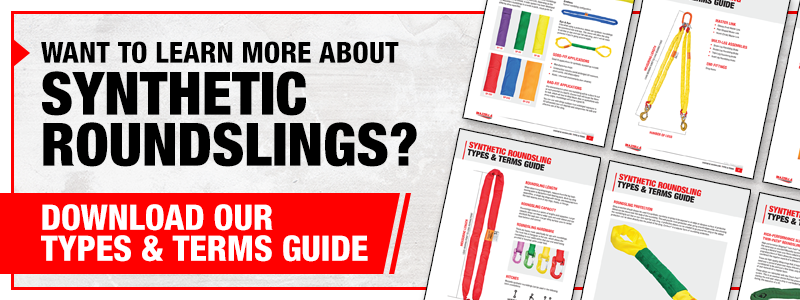

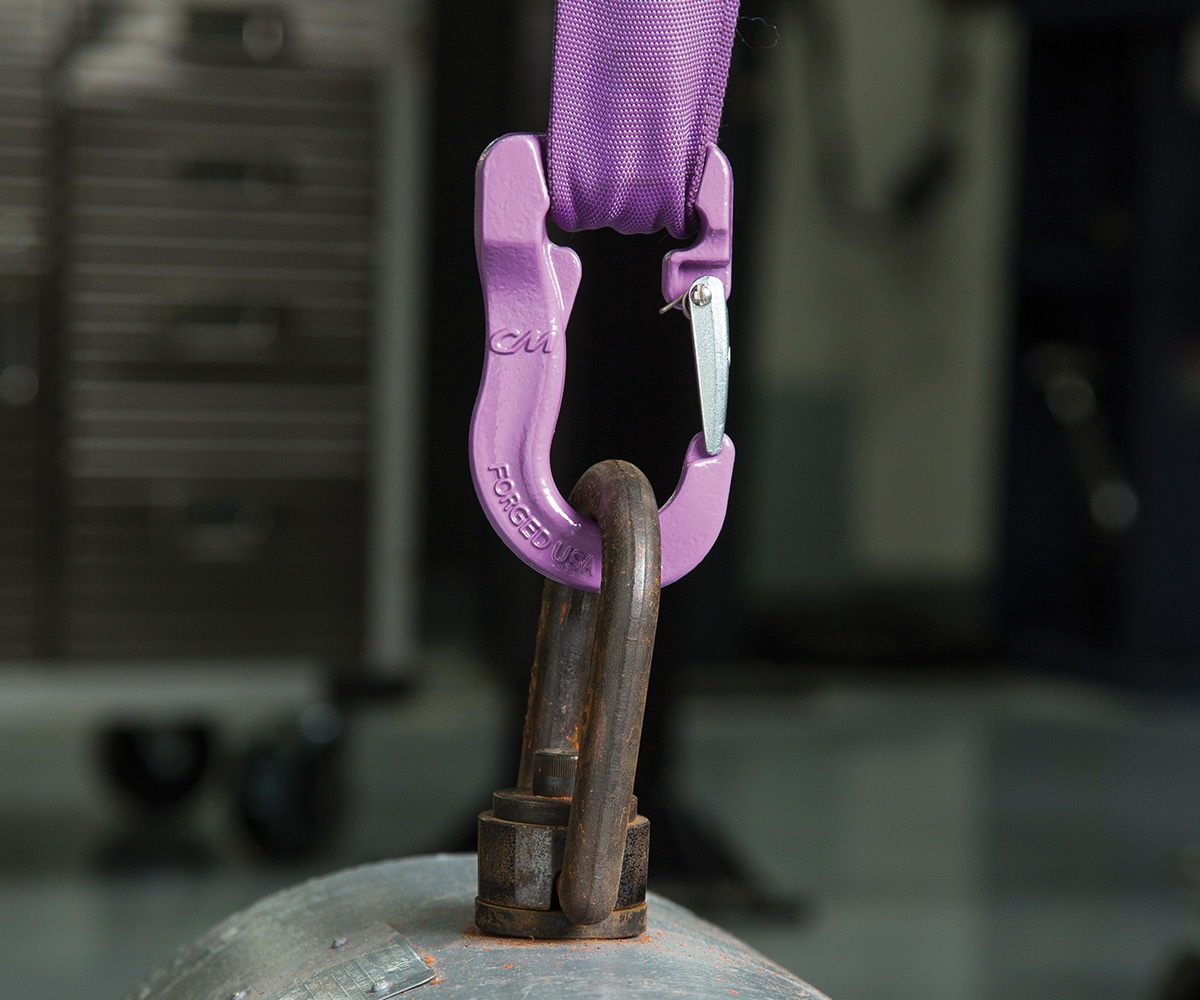
CM Quick Connect Hooks
CM Quick Connect Hooks are the quickest and easiest way to add hooks to any synthetic sling by eliminating the need for additional hardware or assembly tools. Simply open the latch, slide in the sling, close the latch and put the sling into position — it’s that easy!
Copyright 2021. Mazzella Companies.
